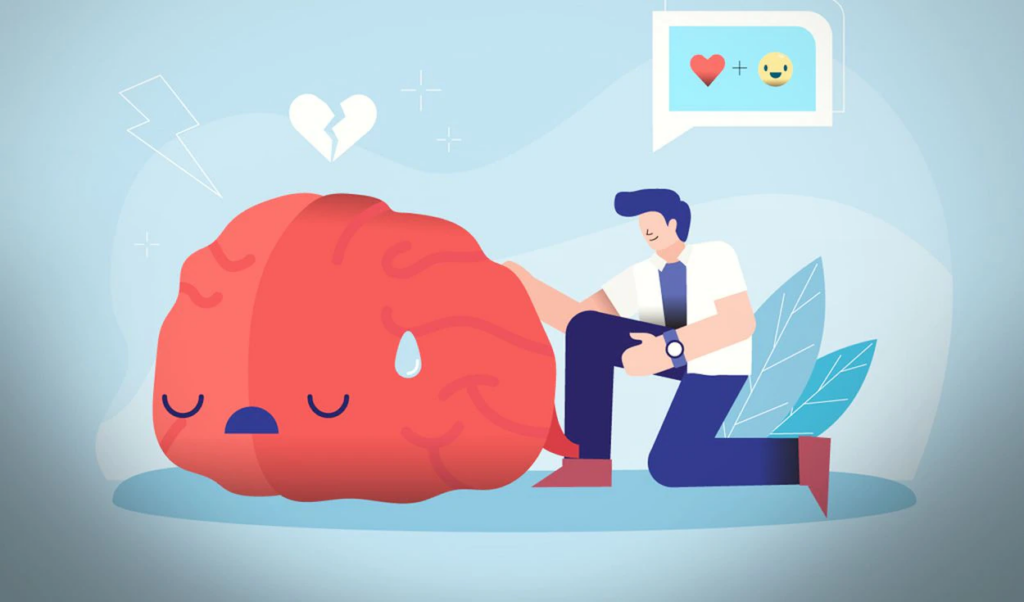
In today’s fast-paced world, many individuals struggle with hidden emotional wounds that affect everyday life and relationships. You might feel overwhelmed by persistent pain and confused by past experiences. Emotional scars can subtly influence your choices if left unaddressed, often going unnoticed until they trigger intense emotional reactions. This article is crafted to help you identify these hidden wounds and offer practical insights to begin your healing journey. By understanding your emotional health and applying effective psychological tools, you can transform pain into personal growth and resilience.
Understanding Emotional Wounds in Psychology
Emotional wounds are deep-rooted issues that often originate from difficult experiences such as loss, trauma, or long-term stress. In psychology, these wounds are recognized as significant factors that shape our behavior, self-esteem, and relationship dynamics. Understanding these underlying factors is the essential first step for effective healing. Recognizing the impact of past experiences helps explain why certain triggers provoke intense reactions.
These wounds can present themselves in many ways—from anxiety and depression to chronic self-doubt and emotional instability. Psychological research shows that while these responses are normal, they are sometimes misinterpreted as personal shortcomings. By identifying the origins of these wounds, you can begin to view your emotional life with clarity and kindness. This shift in perspective is crucial for breaking the cycle of negative thoughts and regaining control over your emotional wellbeing.
Experts agree that understanding, accepting, and processing your past is the cornerstone of any healing journey. Approaching your inner self with empathy creates a space where you are seen as resilient and capable of change, rather than being defined by past pain. Acknowledging that emotional pain often lies beneath the surface sets the stage for thoughtful interventions and renewed hope.
Identifying Your Emotional Scars: Signs and Tools

Identifying emotional scars begins with thoughtful introspection and self-observation. Tools like mindfulness, journaling, and therapy are invaluable for noticing subtle emotional signals that might otherwise go undetected. Self-awareness is essential—it allows you to recognize recurring negative thoughts and behavioral patterns, helping to prevent deeper emotional damage.
One of the first indicators of emotional scars is the presence of unexplained sadness, anxiety, or anger in certain situations. Tools such as mood tracking apps and reflective journaling can help you pinpoint the origin of these feelings. Ask yourself what memories surface during moments of isolation or why particular comments trigger defensive responses. These reflective questions can serve as a vital starting point in the healing process.
Professional guidance is equally important during this phase. Therapists and counselors introduce expert methodologies to dismantle built-up defenses and bring hidden wounds to light. In therapy sessions, cognitive behavioral techniques, psychoanalytic methods, and mindfulness-based stress reduction can effectively address deep-seated emotional pain. When applied with sincerity and consistency, these tools become stepping stones toward reclaiming emotional balance.
Practical Tools for Self-Observation
Maintaining a daily journal helps track emotional highs and lows, revealing patterns and recurring issues. This habit is especially powerful when combined with reflective questions.
Mindfulness exercises enable you to tune into your body’s reactions, uncovering subconscious tensions that hint at hidden emotional scars.
The Role of Professional Support

A skilled therapist offers objective insights and practical tools to deepen your understanding of your emotional state.
Participating in support groups and counseling sessions creates a community where shared experiences validate and accelerate the healing process.
Practical Approaches and Techniques for Healing
Healing emotional wounds requires more than awareness—it demands practical strategies that prioritize your mental and emotional health. In this section, you will discover approaches that blend classic psychological practices with modern therapeutic techniques. Integrating daily healing routines can gradually shift your mindset toward positivity and resilience.
One effective strategy is to develop a consistent mindfulness practice. Techniques like meditation, deep breathing, and guided imagery help center your thoughts and mitigate the negative impacts of stress. Additionally, cognitive behavioral therapy (CBT) equips you with tools to reframe harmful thought patterns, reducing symptoms of depression and anxiety. Combined, these methods create a balanced framework for emotional recovery.
In addition to individual therapy, incorporating physical activity, a balanced diet, and fulfilling hobbies can strengthen your healing process. Exercise, for instance, releases endorphins that boost mood and reduce anxiety. The concept of holistic wellness—caring for mind, body, and spirit—is a common theme in many success stories and is vital for long-term healing.
Mindfulness and Meditation Practices
Spending even a few minutes each day in mindfulness can help you observe and accept your internal state. Consistency is key to achieving lasting change.
Guided meditation apps can support you as you build a regular practice and deepen your mindfulness skills.
Integrative Therapies for Recovery
Cognitive Behavioral Therapy offers structured exercises to help redirect negative thought loops.
Physical exercise and creative outlets, such as art or music therapy, boost mood and foster self-expression during recovery.

Living a Renewed Life: Beyond Your Wounds
Embracing life after working through emotional wounds is a gradual, empowering process. In this section, we explore strategies for building a future that harnesses the strength gained from your healing journey. Healing is not an endpoint but a continuous commitment to living purposefully. Reclaiming your power and redefining your boundaries are key steps in this evolution.
Living post-healing means developing resilience and a proactive mindset. Celebrate small victories and understand that setbacks are a natural part of growth. Tools like gratitude journals and regular self-reflection help keep you aligned with your core values and goals. Every forward step testifies to your inner strength and determination.
True growth emerges when you form healthy relationships and set boundaries that protect your well-being. By surrounding yourself with a supportive network and investing in continuous self-improvement, you build a resilient foundation. This phase of renewal is not about the absence of scars, but the wisdom and inner peace that result from your healing journey.
Building Resilience in Daily Life
Establish daily routines that include positive affirmations and proactive stress management to maintain emotional balance.
Join a community or support group where shared experiences reinforce your commitment to healing.
Redefining Personal Boundaries
Learn to say no, establish clear boundaries, and prioritize your mental health over external pressures.
Regularly evaluate your personal relationships and environments to ensure they nourish your renewed commitment to self-care.

Content Additional
Beyond the foundational strategies discussed above, it is valuable to explore how different therapeutic models contribute to healing. Contemporary research in psychology emphasizes a combined approach. For example, Neuro-Linguistic Programming (NLP) offers insights into how language shapes our internal reality and can be used to encourage positive change. Integrating NLP with established therapies personalizes treatment and gives you greater control over your mental state. Leveraging multiple techniques reinforces the idea that healing is a tailored process.
Another emerging approach is trauma-informed care, which urges healthcare providers to recognize trauma’s pervasive impact. This method draws a clear connection between past trauma and current behaviors, creating safer environments in settings ranging from schools to workplaces. Such spaces foster open conversations about pain and resilience, reducing the stigma around mental health.
Innovations in self-help, through online platforms and mobile applications, now offer guided self-assessments and interactive exercises designed to uncover and heal emotional wounds. These digital tools not only improve access to therapeutic techniques but also provide a community of individuals who understand the journey. When combined with traditional therapeutic practices, they can amplify healing outcomes significantly.
Moreover, the global shift toward prioritizing emotional wellness has spurred a rise in public seminars, workshops, and retreats focused on mental health. Experts in psychology, mindfulness, and holistic medicine converge to share strategies that promote lasting well-being. These interactive sessions empower participants with practical skills to manage stress and overcome deep-seated wounds, underscoring that healing is both a personal and societal imperative.
Healing emotional wounds is a personal and transformative journey. The path can be non-linear, demanding persistence, self-compassion, and a willingness to face deep-seated feelings. With the right psychological strategies and supportive networks, you can understand and overcome the wounds of the past. Remember, every small step is a victory on your road to wholeness and balance. Embrace a mindset of healing, and allow yourself the grace of progress. By working through your inner pain, you pave the way for a future defined not by scars, but by the strength and beauty of your transformation.




